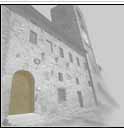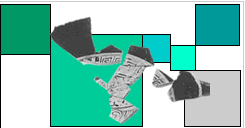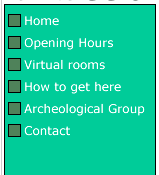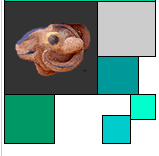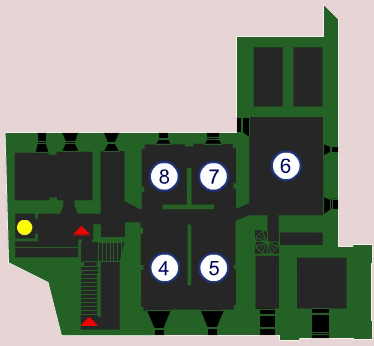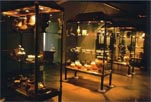|
The
area of Le Ville today is a small conglomerate of houses, mainly
farmhouses, situated on the ridge of low hills which flank the
left side of the river Elsa. The part where the necropolis is
situated is at the extreme south of the municipal land of Colle
di Val D'Elsa, on the border with that of Casole D'Elsa.
The area was well-known until the XVIII century for the discoveries
made by the Bargagli family, owners of the property, who put together
the objects recovered from the necropolis with the rich collection
of numerous relics, from the territory of Chiusi, at their other
property at Sarteano. The archeological collection was then passed
to the state in 1918 for its disposition by will, and became an
integral part of the National Archeological Museum of Siena.
In 1976 the Tuscan Archeological Superintendency authorised the
Archeological Group of Colle to clean some of the tombs in the
necropolis.
In this case also, the tombs had been known of for a long time,
and often repeatedly violated, but, in contrast to what had happened
in the necropolis at Dometaia, the research enabled the recovery
of numerous fragments, and the consequent reconstruction of a
notable number of objects. Until now 10 tombs have been identified
and cleaned, all of them buried because of the collapse of the
roof and their structure seriously damaged by the friability of
the soil.
The study of the tombs and of the recovered objects has allowed
a more exact dating of the necropolis, the use of which began
in the Archaic period, and continued until the Hellenistic period.
Today the necropolis is divided into two groups of tombs: Archaic
and Classic Hellenistic, with only a few hundred metres distance
between them.
In the first unit the most notable part is tomb number 1, for
its characteristically irregular structure, and for its use of
herring-bone design. The tombs in this group, notwithstanding
the violation they have been submitted to, have produced objects
of extreme interest: cinerary urns with their inscribed covers,
small plaques made of bone pertaining to finely-worked caskets
and some splendid gold earrings.
The Hellenistic group of tombs is characterised by the positioning
of five minor underground tombs encircling a large tomb almost
as a sign of respect and esteem for the family who owned it and
bear witness to the important removal of the aristocracy to strategic
points in the Volterra territory up to the Archaic period. It
is a complex tomb with a central vestibule and five lateral chambers
which are of larger dimensions than all the others discovered
in Val D'Elsa, and which have enabled, through the restitution
of innumerable fragments, the reconstruction of more than 400
objects which date from the V to the 1 century BC.
The rare and precious objects from this necropolis are exhibited
on the second floor in room number 9 immediately in front of the
stairs: The glass case contains the earrings "a bauletto",
and the horsehair needle, a pair of exceptionally fine earrings
in the form of leeches, and small plaques in bone with etched
figures of imaginary animals pertaining to a casket with a reconstructed
wooden base.
On the walls around these, there are five cinerary urns in soft
limestone, two of which have inscribed covers and one which is
constructed, unusually, with only three feet.
The other exhibits are in the two adjacent rooms, numbers 10 and
11. The large oval jar decorated with horizontal bands and a geometric
motif, a small Attic cup and a fragmented amphora clearly repaired
many times during that period, which emphasizes how precious the
object was considered at the time, should not be missed.
The objects from the large tomb, number 2, are together in room
number 13. These were in use from the V to the I century BC. Notwithstanding
repeated violation, this rendered a certain quantity of fragments,
the request for whose reconstruction came from the Archeological
Group of Colle, required almost 10 years to complete.
Fragments of Attic red-figure kraters, painted drinking cups,
and wine jars, a service made from silvered ceramic, a large
number of kelibae from Volterra, and a significant variety of
pottery of various uses, mainly table-ware, are worth seeing.
|

